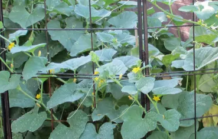Little barley is a winter annual that comes up in late September – October and spends the winter as a small plant. It generally has a bluish-green color like that of many winter small grains. Little barley turns distinctly tan to brown in color in the early spring when mature. These characteristics, along with the grain-like seedhead, help to distinguish little barley from most other winter annuals. It thrives in the cooler spring temperatures, forms seed heads and dies out usually by July.
So, why are we talking about little barley now? Because now IS the time to control it The best control for little barley in turf is a thick lawn that is mowed high enough that sunlight does not hit the soil. Little barley seed will not germinate in such conditions.
Overseeding in late August to early September can thicken up a tall fescue lawn and help prevent a little barley infestation. However, early germinating little barley may not be controlled. So, if you do not plan to overseed even though the lawn is a bit thin, preemergence herbicides can be used to provide at least partial control of this weed.
Dimension (dithiopyr), is labeled for barley (Herodium spp.) which would include little barley and therefore can be used to keep this weed under control. Because little barley is a winter annual, apply the preemergence herbicide the fall and water in to activate. However, you may have to apply at least a couple of weeks earlier if you are in southern Kansas. If overseeding, do not apply any preemergence herbicide as it will interfere with the germination of tall fescue.





